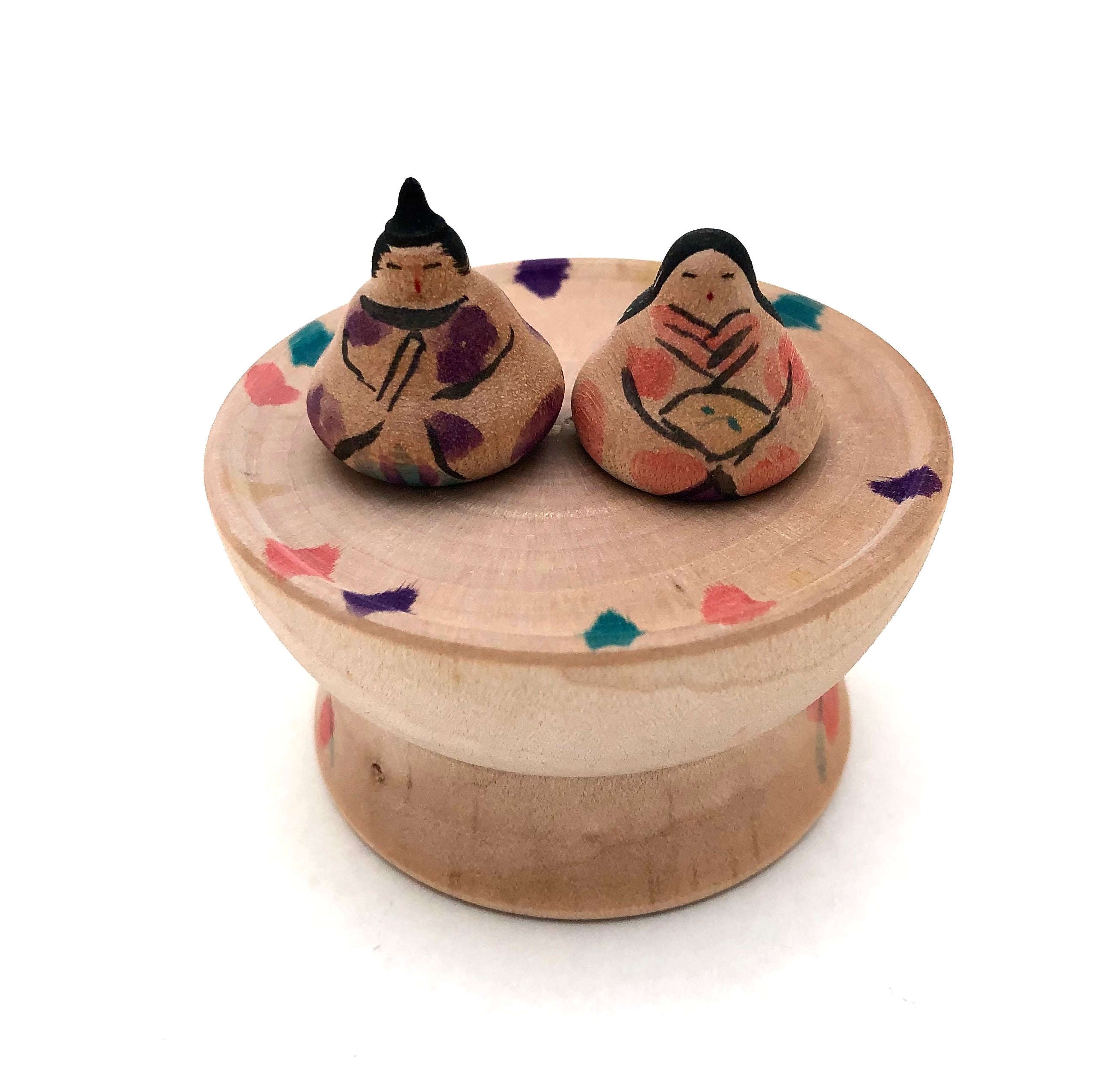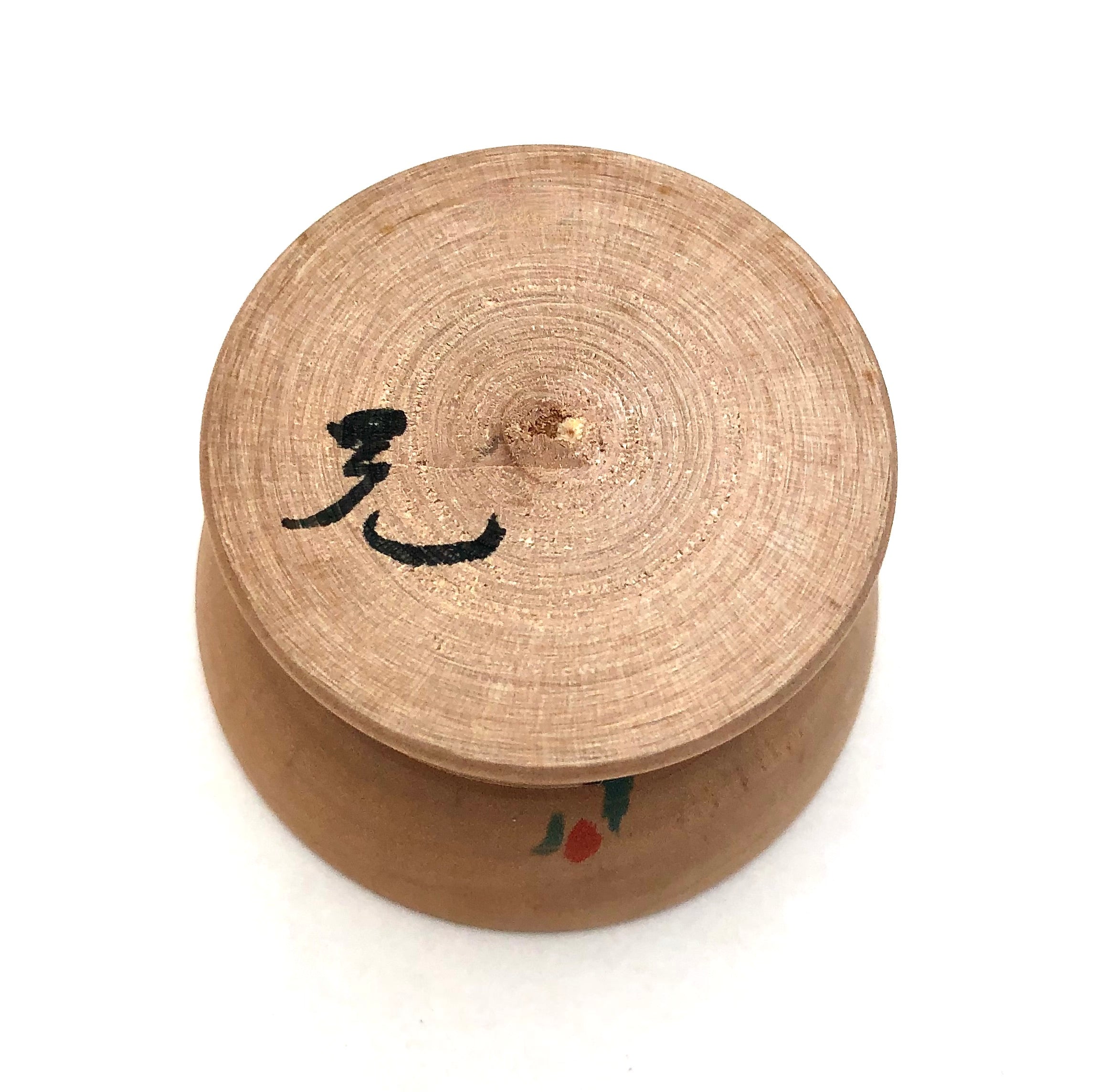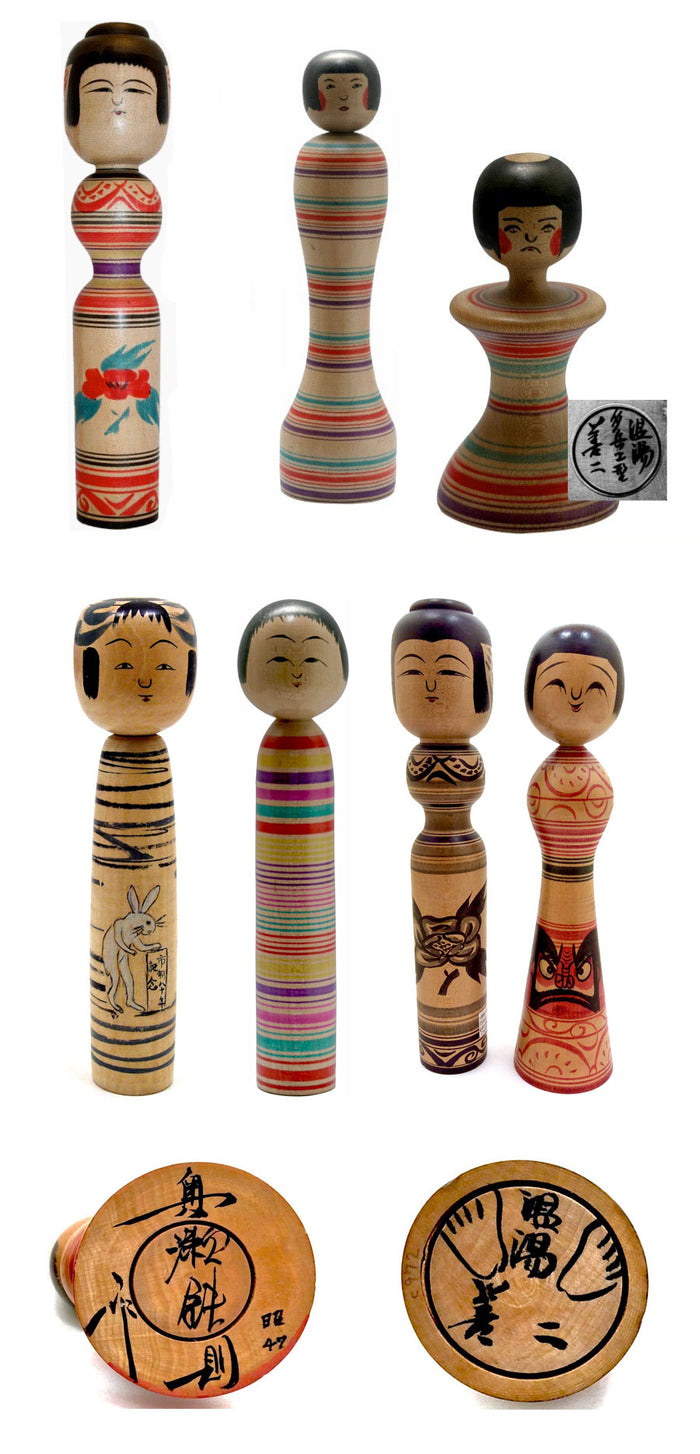

Japanese Vintage Hinamatsuri Ningyo Festival Prince and Princess Toy by Kon Akira (Senju)
Dimensions: 1-1/2”h x 2-3/8” dia. (Hina Dolls 7/8” h x 7/8” dia)
This beautiful wood-carved and painted toy was used for amusement by young girls. The kiji-shi (woodworkers), during this period, used their spare time making souvenirs for visitors at the Onsens. This toy was created to celebrate the New Year holidays in Japan. The set of two Hina dolls is honorably presented on a wooden pad. They are simply designed and detailed wearing traditional kimonos.
Every year on March 3rd, Japan celebrates the Doll festival. Hina Matsuri is ‘Girls' Day’ or “Dolls day’. The parents will give all types of Hina dolls to their daughters. A day to thank heaven for little girls-to wish for their future health, wealth, and happiness. The piece is signed on the bottom.
Condition: Excellent condition means that the piece has no cracks or repairs with fine and original details consistent with age and standards of collectible Vintage Japanese Toys.
ADDITIONAL INFORMATION: Seiju studied under Master Hasegawa, Tatsuo, and his designs are based on the Tsugaru-style kokeshi, where his pieces were sold at the Owani Spa, Aomori. Little is known about this artist, other than he is from the Yamagata area, a major Kokeshi-making city/prefecture. ‘Noh’ theatre, of course, along with Kabuki, is Japan’s great gift to the Western world. They originated at religious festivals in the first half of the fourteenth century.

Japanese Traditional Kokeshi
Tsugaru-Kei (Family)
Prefecture: Aomori
Origin:
Tsugaru is the youngest of the eleven traditional kokeshi strains. They began in the 1920s. A Tsugaru doll has a great deal of variety in its shape and pattern. The Tsugaru Kokeshi are made from a solid piece of wood, created using a difficult reverse lathe technique. The Tsugaru Kokeshi is the only strain to still use this method. The Tsugaru-kei developed after adults took an interest in buying more kokeshi as souvenirs from trips to the hot-spring resorts. Tsugaru dolls, which originated in the Aomori Prefecture in the region of the same name, are sometimes also known as Nuruyu dolls, originally fabricated by Hidetaro Mori. They made their appearance at Nuruyu (“lukewarm") Onsen, in the city of Kuroishi.
Collector's note – characteristics/painting style:
The dolls have round chests, thin waists, and cone-shaped lower bodies on which human faces are painted. They will strike you as quite unusual and interesting. One of the distinguishing features of this family of Kokeshi is a heavier hairstyle, in that most are Okappa styling, which has a full head of hair or mostly full head of hair in a bob style, and a chignon or topknot, without much decoration on the head. The hair is painted solid black, with brush strokes visible on the edges of the bangs and hair. One can easily recognize a Tsugaru doll because many will have the face of Daruma painted on the lower half of the body, with flowers painted on the doll looking quite realistic. The short history of the strain may not yet have given it enough time to utilize flowers such as White irises, peonies, and camellias. Stripes (Rokuro Moyo) appear at the top, center, or bottom of the doll. Some doll motifs, such as Ainu (native designs), that replace the Daruma image have simplified versions of peonies, irises, cherry blossoms, and camellia.
NOTE: We have seen a few dolls with the image of Daruma that were created by Sato, Zenji, (b.1925), in which he drew “feet” on the bottom with his signature, which was inspired by his mentor and master, Mori, Hidetori, (b1895), who used the same interesting humorous addition since kokeshi never incorporated feet.

Leading, Craftsmen:
Abo, Muchihide, 1950, (Hirosaki, Aomori) - Master: Sato, Zenji. No additional published information
Mori, Hidetaro, 1895 (Nuruya, Aomori) - Master: Mori, Motokichi. No additional published information
Mori, Mitsuo, 1955 - Masters: Mori, Hidetaro & Shin-ichi. No additional published information
Muramoto, Fumio, 1941- Master, Mori, Senzo. No additional published information
Okuse, Tetsunori, 1940 - Master: Mori, Hidetaro. No additional published information
Sato, Yoshiki, 1949, (Omani, Aomori) - Master: Mori, Hidetaro. No additional published information
Sato, Zenji, 1925, Master: Mori, Hidetaro. No additional published information
Explore & Learn More about Tsugaru-Kei (Family)